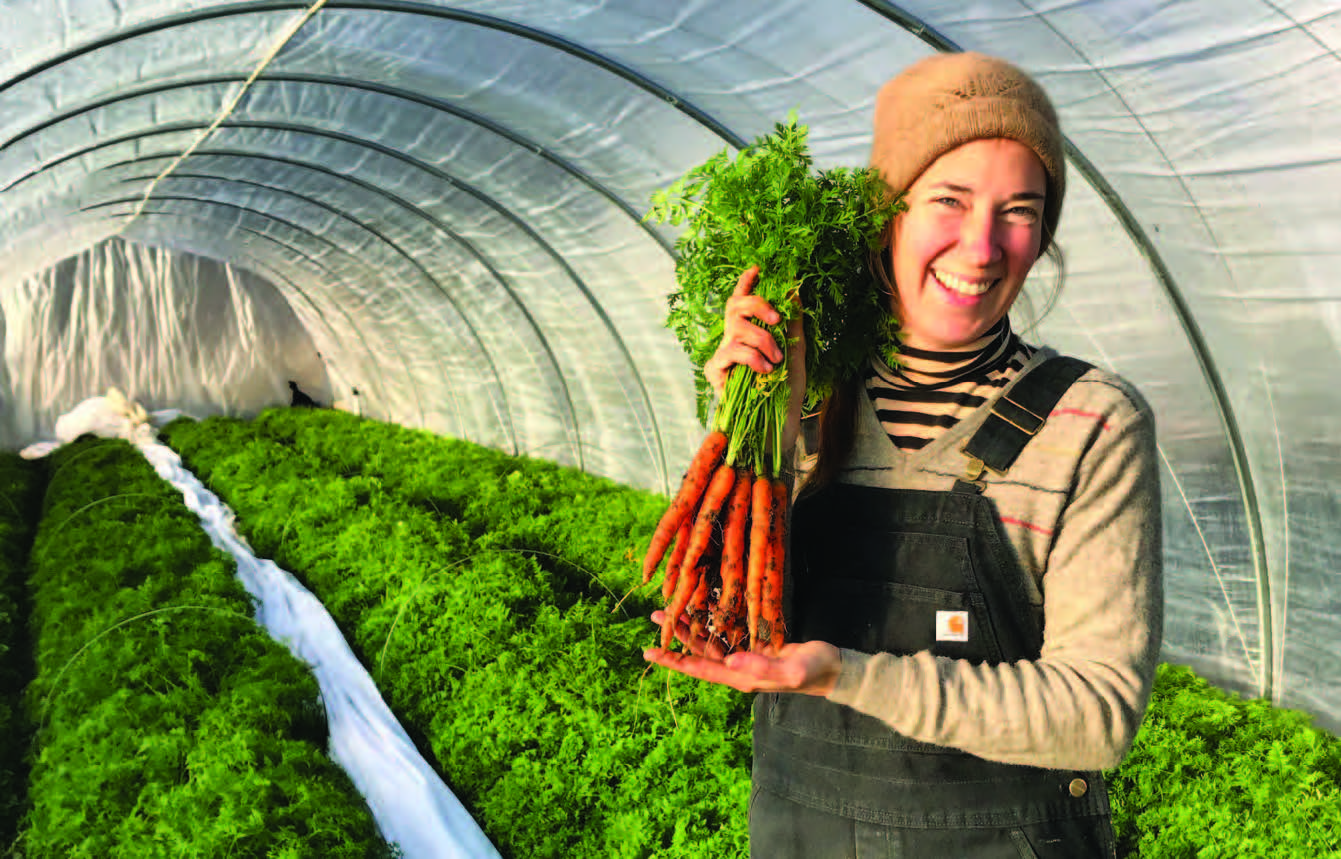Authentic. Exotic. Spectacular. So what are you waiting for?
By Andy Clurfeld
Summer travel season is upon us. Time to dust off the passport and plot excursions to ports exotic and intriguing. Or stay home and travel light—very light. And very near. Once upon a time, adventurous diners in New Jersey had to travel thousands of miles to experience the cuisines of foreign places. Not true today.
In fact, Maplewood resident Anthony Ewing is tracking and mapping the Garden State’s myriad and many ethnic cuisines on his in 2010, it’s a veritable United Nations of dining destinations that includes some 1,200 Jersey restaurants serving 60 different cuisines. “From Afghan to Vietnamese,” Ewing says.
The New Jersey native, who started mapping his top food finds after moving back home from Brooklyn, got us to thinking about all the terrific eateries practically in our backyard. Sure, we love our sushi nights, and the “local” that serves a beloved Italian dish is never out of our hearts. But on this trip around our neck of the woods, we wanted to explore foods a little less familiar. So we’ll hold the best-sushi-rolls and Nonna-approved red-sauce roundups for other issues of EDGE.
Herewith, an eating tour that includes Chinese-inspired Peruvian, Ethiopian, Jamaican, Middle Eastern, Southern Indian and Russian cuisines.

Photo courtesy of Rupamdas75
Chowpatty
1349 Oak Tree Road • Iselin
732-283-9020
www.chowpattyfoods.com
Let’s cut to the postscript: So enamored of the dahi batata poori at Chowpatty were we that, seconds after we finished dining, Atsuko Sasaki and I rushed next door to Chowpatty’s market to buy the ingredients to make them at home. The little dish that captivated was a small, delicate puff made from chickpea and rice flours that’s sliced at the top so it could be stuffed with potato, a cilantro-green chili kind of pesto, a tart-faintly sweet reddish-brown sauce, and a slap of super-creamy yogurt. We downed those babies in no time
Now, my pal Atsuko is a certified chef in Japan and mightily skilled in the kitchen, so she replicated the dhai bataka poori at home first time out. I, of course, forgot the yogurt, but still managed to enjoy eight puffs before I even sat down to dinner.
This is what dinner at Chowpatty can do for you: educate and stimulate.
After being enchanted by the dhosas, Atsuko found a friend who offered to teach her how to make the crispy rice flour crepes that are super-sized and can be filled with all manner of things: spices, cheeses, onions, vegetables. We nab the cheese-masala dhosa that puts two spice mixtures into play to great effect. A chile-potent red does a do-si-do with a cilantro-coconut green as they take aim at the sultry cheese melting into the crunchy crepe.
The sturdier uttapam, also made with rice flour, is served here much like a pizza. Ours is topped with a variety of vegetables and we can’t help but slice it like a tomato pie. We’re loving it alongside the tuver ringan, a mash of eggplant and peas that comforts and warms.
You must try a Thali platter at Chowpatty: Served on a round platter compartmentalized into little dishes of vegetables, rice, dal, pickled vegetables, yogurt-based sauces and legumes, it’s a feast meant to be eaten with tiny pappadum and charred bread made with millet flour. Don’t be shy with the sauces, including chili pastes hot and moderate, ghee and raita.
Dessert? Go for the pineapple-orange ice cream or the very dense, very rich, extraordinarily delicious mango kulfi, crowned by pulverized pistachios. We’ll end with another postscript: That’s sold in the next-door market, too.
Nargiz Deli & Cafe
1651 Springfield Ave. • Maplewood
973-761-0123
Facebook: NargizDeliCafe
You can get gyros and paninis and pita sandwiches crammed with feta-cukes-tomato and your craving of the moment (lamb, chicken, hummus) at Nargiz, a specialty market with a bent towards things Russian and Eastern Mediterranean. But why get what practically is ordinary in NJ when you can get a piroshkie?
This, to me, is a no-brainer. This Russian marvel is an uber version of a pirogi crossed with a buttery, flaky almost brioche-style roll stuffed with something wonderful. Honestly, you don’t even need sour cream. That’s how good these piroshkies are.
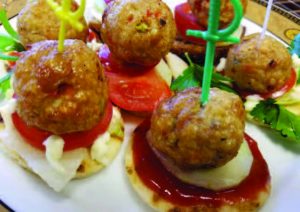
Photo courtesy of Nargiz Deli & Cafe
Do like we did and get an assortment. Lamb? Yup. Potato? Natch. Cheese? Of course. As I eat them, I can’t help but feel this is a kind of melting-pot food that so many people from so many cultures would relate to easily. On top of the pirogi-brioche appeal, it’s got a Korean pork bun sensibility and a hometown hoagie attitude.
Lamb meatballs are killer tasty at Nargiz. Find them in the display cases and tell the friendly folks behind the counter that you’d like them warmed so you can eat a bowl of them at one of the cafe tables. While you’re at it, score the earthy, forcefully smoky eggplant casserole and a scoop of the Georgian bean salad, flush with cilantro, chopped onions and nuts.
Don’t leave without shopping around. I found a pretty jar of pomegranate molasses that will make my next muhammara (red pepper-walnut-pomegranate) spread very likely the best ever. No offense to mail-order businesses, but you never know what you might bump into when combing the shelves of a place like Nargiz.
I am going to figure out what I’m going to do with the cured sardines I snatched from the refrigerated case. Tonight might be the night I warm some olive with lots of lemon juice and flat-leaf parsley and toss those little fishes with strands of spaghetti and that sauce. Might be? Definitely will be.
Lalibela
261 Irvington Ave. • South Orange
973-327-4840
Facebook: Lalibela Ethiopian
Kategna is injera bread plied with butter and spiked with hot chili spices. It isn’t shy and it isn’t like anything you’ve ever tasted, unless you’ve been intimate with the addictively sour, spongey bread of Ethiopia. Made from teff flour, injera is the vehicle for eating in Ethiopia, used instead of forks and spoons and knives. Its uniquely pourous texture makes it one sublime scooper, and it’s the principal reason you should check out Lalibela, a small, humbly decorated storefront with a devout clientele.
So back to the kategna: Here at Lalibela, the chile-flecked injera is rolled and sliced something like a wrap sandwich – only there’s no filling. The flavor and the texture of the injera itself are what give it charisma.
It’s almost as though there’s an effervescence to injera. It’s rather magical.

Photo courtesy of Lukasz Nowak
Anyway, here’s what happens when you order a pair of entrees at Lalibela and pretty much any Ethiopian restaurant: Both entrees, as well as a pair of sides of your own choosing, come spooned atop a huge, flat pancake of injera. You also get a basket of jelly-roll style injera. Take your pick and start scooping.
The lamb stew, with lots of garlic and onions and a pronounced pop of tomato and pepper, is a stunner, with layers of flavor that serve as foils for the sour bread. A stew of beef is less interesting, mostly because the spicing is less complex, but little dumplings made from chickpea flour and and long-cooked in a berbere-spice mix with onions holds its own with the crisp, thin pancake.
Collards are a must, for they serve as a bridge between the meats and the legumes. Lentils, for instance, are on fire in a way that rivets; when you alternate between the collards and the fiesty beans, there’s a yin-yang that comes into play.
The service at Lalibela varies: You might get a helpful soul or one less interested in your culinary education. Odds are, no matter, you will at very least bump into new flavors that make for a new favorite dish.
MishMish
215 Glen Ridge Ave. • Montclair
973-337-5648
www.mishmishcafe.com
MishMish is a hit and hip restaurant in the downtown district, a short stride from Anthropologie and an even quicker journey to the mind-set of Yotam Ottolenghi and his era-defining “Plenty” and “Jerusalem” cookbooks. You want a little Yotam without the kitchen work? Come to MishMish and be transported to the heart of the Middle East.
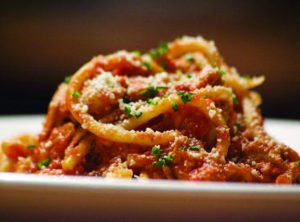 A local who is conversant in MishMish-ese tells me the hummus is a marvel, but you can skip it in the dip round since it’s easily obtained in hummus bowl form. This is excellent advice, especially since the smoked eggplant spread here is one to order by the gallon. Maybe by the cauldron, since it’s extra-deeply smoky, comes with a flourish of mild, crumbled cheese, and is the perfect partner for the singularly sensational pita.
A local who is conversant in MishMish-ese tells me the hummus is a marvel, but you can skip it in the dip round since it’s easily obtained in hummus bowl form. This is excellent advice, especially since the smoked eggplant spread here is one to order by the gallon. Maybe by the cauldron, since it’s extra-deeply smoky, comes with a flourish of mild, crumbled cheese, and is the perfect partner for the singularly sensational pita.
Let’s take a moment to talk about this pita. Forget what you buy in the supermarket. This is pita from Planet MishMish, a thicker incarnation that mines the depth of flour like, say, a Dan Richer at Razza (in Jersey City) does for his bread and pizza.
Fried cauliflower is worth the splurge on oil intake, cause it’s so good, so comforting, that it doesn’t even need the yogurt-based dip served on the side. I flat-out adored the shishito peppers char-grilled whole and served naked save for a wedge of lemon. Eat ’em by the bushel.
If you are a card-carrying member of the Ottolenghi flock, you know from shakshuka. (If not, it’s eggs poached in tomatoes, onions, chilies and spices, often served with cheese on top and bread.) You’ve eaten shakshuka for breakfast, for lunch and for dinner. It’s the absolute-right-at-any-time dish. How did we live without shakshuka?Anyway, MishMish does it with mushrooms and harissa, with lamb meatballs and with lamb sausage. Each has a following. I can vouch for the lamb meatballs. I could write a whole story just about the lamb meatballs, but I don’t have time or space.
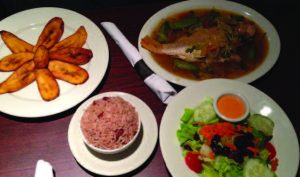
Photo courtesy of Pimento Grill
Mostly because I want to get to the hummus bowl with ground brisket ragu. Are you in heaven yet? No kidding: The folks here grind up brisket and add it to a slushy of tomatoes and warming spices. Think cinnamon most prominently and you’ve nailed it. If you eat this dish and don’t immediately plan a dinner party, do not consider yourself on the food-centric spectrum. Depending on your mood, you might favor the grilled chicken shawarma hummus bowl, a beauty thanks to the roasted tomatoes and drop-dead sensuous caramelized onions.
Think about it. Is there a reason not to eat the MishMish way every day?
Pimento Grill
1908 Springfield Ave. • Maplewood
973-846-4555
www.pimentogrill.biz
Pauline Barnes, owner/chef at this sweet storefront, wants you to know that once you enter her domain, you are under her care. And guidance. She’ll help you plan your dinner, your party, your life. She’ll tell you why you need Pimento’s jerk chicken, why you must experience her oxtails, why you need the coconut “run-down” red snapper.
We are happy in her presence and soothed by her comforting Jamaican fare. No, it’s not high-on-the-Scoville scale stuff, but it’s lazy-day swell when island attitudes beckon and you want to turn yourself over to dishes that take you away. Like a Calgon bath used to do.
Talk about those oxtails. They are simmered in gravy, along with big, broad butter beans and a host of island herbs and gentle spices. Similarly attuned to the milder side of eating life are the brown stew vegetables, which incorporate soya chunks to maximum advantage. This is the dish that will cure you of your misconception that everything island is going to set off a 12-alarm fire in your mouth.
We took on the curried goat with relish, gnawing on the hunks of lamb-like meat. Ditto for the jerk chicken, which is among the mildest I’ve ever tried and totally right for beginners. We snacked on the fried sweet plantains throughout dinner, because, frankly, they put you in a “nothin’-can-be-finer” mood.
I think the under-the-radar fishes just might be the best tickets on Pimento’s menu. Pauline’s touted run-down snapper is a winner, simmered as it is in a coconut sauce and served head-on, bones-in, yet easily filleted at table. It was the sauce, creamy, yet light, and flecked with greens, black beans and onions, that made the dish divine. The escoveitch whiting, even though fried, offered a nice ping of vinegar.
Hello, island time. We need you.
Don Julio
50 Marshall St. • Elizabeth
908-820-9494
www.donjuliorestaurantnj.com
Chinese immigrants to Peru in the mid- to late-19th century brought with them culinary concepts and traditions they fused with ingredients and new sensibilities they discovered in their new home in South America. The result is a cuisine known as “Chifa,” and nowhere in New Jersey is it found with more authenticity and sheer deliciousness than Don Julio.
Located near the waterfront here, Don Julio is a destination. It can be crazy-packed on weekends; fair warning. Folks come for both the Chifa and also traditional Peruvian fare. The menu, almost telephone-book long, is worth coming early to read so you can study and plot.

Photo courtesy of Luis Delboy-Don Lucho
Here’s what I think you should do: Assemble a large party and go all-out. Do Chifa as your primary, but don’t miss the best of Peru here. First, have the ceviche, for it’s an expertly crafted Peruvian model, flush with shrimp, topped with hunks of sweet potato and plain potato, a chunk of big-kerneled Peruvian corn, crunchy beans and a ton of onion rings. Bet you will eat the whole thing.
Then go for the wonton soup. Frankly, strip mall American Chinese joints water down, and dumb down, wonton soup. See what it can be by sipping the mutlilayered broth holding delicate-skin wontons, thick slices of juicy roast pork, thick shreds of cabbage and slices of white-meat chicken. And, ah! The noodles, the noodles!
Fried rice is nirvana. It is light, bright and mostly about the exquisitely cooked rice. It’s neither salty nor dry. It is punctuated by nibs of pork, peas, egg and sprouts, and it possesses a seminal freshness.
Our server smartly directed us to the sirloin steak over “green noodles.” How simple, yet how beautiful. The “green noodles” are made so by tossing hearty spaghetti-like strands with a verdant sauce that looks and tastes like pesto made with cilantro. Which it is. But, again, there is a lightness and a brightness that speaks to a deft hand in the kitchen.
We cannot resist another recommended dish, the sweet-sour fried fish, which is neither sweet nor sour, but fascinating in its purity of taste. Plied with cabbages and surrounded by a brothy brown sauce, it looks like a bowl of confusion, yet yields clear, clean tastes. It says a lot about Don Julio. Which can teach you a whole lot about “from-away” flavors right in your own backyard.
 ETHNIC NEW JERSEY
ETHNIC NEW JERSEY
Anthony Ewing, founder, publisher, editor, writer of the peerless EthnicNJ.com Web site, has a handful of favorite ethnic restaurants in the EDGE sphere. Here are five, in no particular order, that are worth your while to check out.
The Banderas • Summit • Costa Rican
Enter to a full wall mural of a Costa Rican volcano. Find inside a traditional menu of rice dishes, including chicken and rice and shrimp and rice. “Costa Rica is all about simple, straightforward food,” Ewing says. “Not too spicy.”
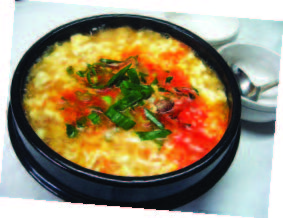 Seoulite • Berkeley Heights • Korean
Seoulite • Berkeley Heights • Korean
An early example of authentic Korean is this regional favorite that settled into a mainstream town years ago. “There aren’t barbecue tables,” Ewing says. There are, however, beautiful “soft tofu stews and bibambap made in the kitchen and rice cakes in red pepper broth.” Ewing notes there will be another branch of Seoulite opening soon in Somerville.
Thai House Rock • Colonia • Thai
Well, Thai with a hefty “side of rock-’n’-roll,” Ewing says. Think vinyl records on the walls. “It’s a hole-in-the-wall,” he adds, but the food is sincere.
Arepas Pues • Elizabeth • Colombian
“Authentic, Colombian-style arepas are served here,” Ewing says, which are different than those from other parts of South America.
Binh Duong II • Hillside • Vietnamese
It’s the younger sibling to the original, in Bloomfield, and Ewing pegs this one as serving better food. In fact: “Some of New Jersey’s best Vietnamese food.”
Editor’s Note: Andy Clurfeld recently presided over the 1st Annual Garden State Culinary Arts Awards. New Jersey’s most influential restaurants and chefs vied for top honors in 13 different categories in front of a standing-room-only crowd of foodies, friends and family. Several nominees have appeared in the pages of EDGE, including Cucharamama, A Toute Heure, Common Lot and The Frog and The Peach. You can check out these stories and others by clicking on the FOOD button at edgemagonline.com.
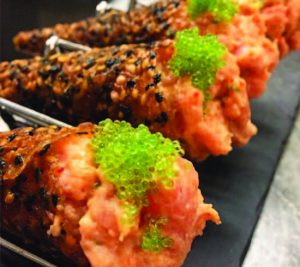
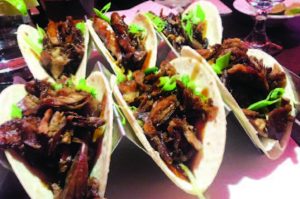
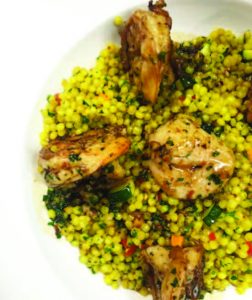



 FOLLOW YOUR NOSE
FOLLOW YOUR NOSE



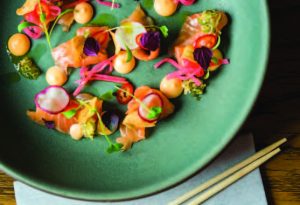
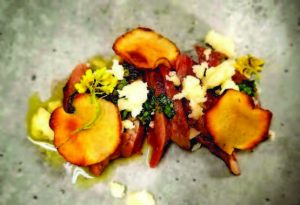



 Somos is large. You enter to a posh tavern of a space that shows how architect-designer Michael Groth likes playing with geometric shapes as much as Placencia likes stretching the parameters of traditional ingredients and classic dishes. Banquettes make little rooms out of a cluster of four round tables set for two. Semi-circular high-tops align to form the outline of another, larger circle. Chairs with short backs belly up to a bar softly lit from both the floor and the underside of the counter. There are arches as doorways and shelving and also as ornament and decor. You segue to a dining area that’s far less dramatic, set with light wood tables and chairs and lighting that’s not about creating a scene. That’s the purview of the food.
Somos is large. You enter to a posh tavern of a space that shows how architect-designer Michael Groth likes playing with geometric shapes as much as Placencia likes stretching the parameters of traditional ingredients and classic dishes. Banquettes make little rooms out of a cluster of four round tables set for two. Semi-circular high-tops align to form the outline of another, larger circle. Chairs with short backs belly up to a bar softly lit from both the floor and the underside of the counter. There are arches as doorways and shelving and also as ornament and decor. You segue to a dining area that’s far less dramatic, set with light wood tables and chairs and lighting that’s not about creating a scene. That’s the purview of the food. 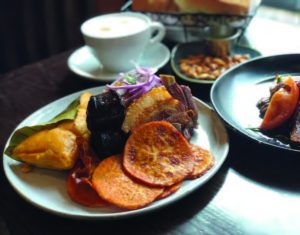 You can eat the cachapa all night, if you’d like, or you can pry chunks of black bass from slivers of red onion in a ceviche that’s brightened by a vivid soup of tomatillo flecked with nibs of avocado, snips of cilantro and the suspicion of chilies. Grab the tortilla crisps angled on top to scoop up the tomatillo broth—or ask your server for a sauce spoon. The ahi tuna ceviche is richer and more spirited, with its base of coconut milk plied with rocoto and lime. In this one, use the strips of fried plantain to sop up the sauce. I couldn’t ask you to leave behind the chicharron de pescado for the chicken-filled croquettas: The silky cod crusted in quinoa and topped by both a chop of tomato salsa and an aioli infused with sweet piquillo peppers is a terrific table partner for the pert fritters deftly fried and synched to the tune of aji amarillo chile peppers.
You can eat the cachapa all night, if you’d like, or you can pry chunks of black bass from slivers of red onion in a ceviche that’s brightened by a vivid soup of tomatillo flecked with nibs of avocado, snips of cilantro and the suspicion of chilies. Grab the tortilla crisps angled on top to scoop up the tomatillo broth—or ask your server for a sauce spoon. The ahi tuna ceviche is richer and more spirited, with its base of coconut milk plied with rocoto and lime. In this one, use the strips of fried plantain to sop up the sauce. I couldn’t ask you to leave behind the chicharron de pescado for the chicken-filled croquettas: The silky cod crusted in quinoa and topped by both a chop of tomato salsa and an aioli infused with sweet piquillo peppers is a terrific table partner for the pert fritters deftly fried and synched to the tune of aji amarillo chile peppers. 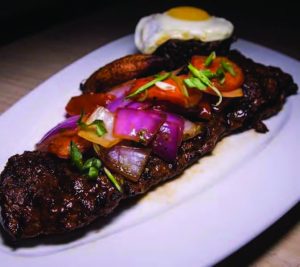 If you wish, you can stop here, with a full slate of small plates that will evolve and change with the seasons and the desires of Placencia and his chef de cuisine Roberto Carnero. The main courses are scaled back in quantity and also achievement. Peruvian pot roast is shredded and served with wide noodles in a spare sauce of tomato, carrot and even green peas. Chicken is roasted with achiote, plopped on mashed potatoes and a messy splay of limp jicama slaw dressed in something that gave it a garish magenta glow. Branzino, grilled with little seasoning, was a snooze alongside yuca fries with far less personality than mainstream French fries, plain white rice and a metal ramekin of bland pico de gallo. The patatas bravas, which we paid for as an extra side, needed more of the good romesco aioli. But they had flavor.
If you wish, you can stop here, with a full slate of small plates that will evolve and change with the seasons and the desires of Placencia and his chef de cuisine Roberto Carnero. The main courses are scaled back in quantity and also achievement. Peruvian pot roast is shredded and served with wide noodles in a spare sauce of tomato, carrot and even green peas. Chicken is roasted with achiote, plopped on mashed potatoes and a messy splay of limp jicama slaw dressed in something that gave it a garish magenta glow. Branzino, grilled with little seasoning, was a snooze alongside yuca fries with far less personality than mainstream French fries, plain white rice and a metal ramekin of bland pico de gallo. The patatas bravas, which we paid for as an extra side, needed more of the good romesco aioli. But they had flavor.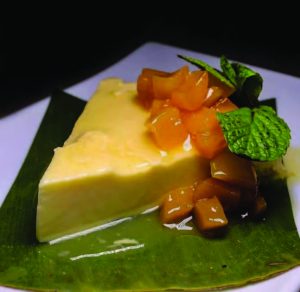 Don’t expect the pineapple tres leches to look like any tres leches you know: Here, it’s served as a layered parfait in a clear, tall glass, with a zippy coconut-rum sauce and chunks of passionfruit laced within—and a toasted mashmallow-y substance on top. My dining companions really liked it, as well as the squash doughnuts drizzled with a cinnamon-streaked fig relish. Me? I could’ve returned to bliss with the cachapa.
Don’t expect the pineapple tres leches to look like any tres leches you know: Here, it’s served as a layered parfait in a clear, tall glass, with a zippy coconut-rum sauce and chunks of passionfruit laced within—and a toasted mashmallow-y substance on top. My dining companions really liked it, as well as the squash doughnuts drizzled with a cinnamon-streaked fig relish. Me? I could’ve returned to bliss with the cachapa.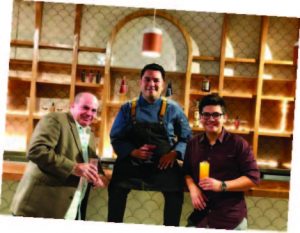 Behind the Scenes at Somos
Behind the Scenes at Somos Viana, himself a nationally recognized chef who this year was nominated for a coveted James Beard Award as Best Chef in the Mid-Atlantic region—and the Foleys, a teacher and an electrician originally from Queens (who in 2004 moved to Washington Township in Warren to farm)—were anointed by the Outstanding in the Field hierarchy as worthy of hosting a dinner. This is a big deal.
Viana, himself a nationally recognized chef who this year was nominated for a coveted James Beard Award as Best Chef in the Mid-Atlantic region—and the Foleys, a teacher and an electrician originally from Queens (who in 2004 moved to Washington Township in Warren to farm)—were anointed by the Outstanding in the Field hierarchy as worthy of hosting a dinner. This is a big deal.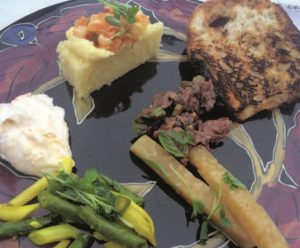 OITF, founded by Jim Denevan in 1999 as a “traveling celebration of people and place and the origins of good food,” had stopped in New Jersey once before, last year, at Riverine. Folks had such a good time at the buffalo farm, OITF decided to come back. The Foleys reached out to Viana, who brought his Heirloom crew (Sean Yan, Kendall Szpakowski, Katherine “Kat” Norat, Rob Santello and owner Neilly Robinson) to the farm to do what they do best: Make the most out of from-the-farm ingredients. The 250 diners were waiting—and had been since seats to the long table set in the signature OITF arc had gone on sale the first day of spring last March, and sold out shortly after. It’s a competitive sport, acquiring OITF dinner reservations; there are those who follow the flow of the transcontinental dinner party as it serves forth starting in the early part of the spring in the warmer climates and continues through fall, touching down in colder parts of the country. Demand is such that, after a break for the OITF home team during the holidays, there’s now a winter session of dinners in the warmest parts of the country.
OITF, founded by Jim Denevan in 1999 as a “traveling celebration of people and place and the origins of good food,” had stopped in New Jersey once before, last year, at Riverine. Folks had such a good time at the buffalo farm, OITF decided to come back. The Foleys reached out to Viana, who brought his Heirloom crew (Sean Yan, Kendall Szpakowski, Katherine “Kat” Norat, Rob Santello and owner Neilly Robinson) to the farm to do what they do best: Make the most out of from-the-farm ingredients. The 250 diners were waiting—and had been since seats to the long table set in the signature OITF arc had gone on sale the first day of spring last March, and sold out shortly after. It’s a competitive sport, acquiring OITF dinner reservations; there are those who follow the flow of the transcontinental dinner party as it serves forth starting in the early part of the spring in the warmer climates and continues through fall, touching down in colder parts of the country. Demand is such that, after a break for the OITF home team during the holidays, there’s now a winter session of dinners in the warmest parts of the country. After cocktails and passed hors d’oeuvres, after sampling Riverine’s extraordinary buffalo milk cheeses and visiting the cave where some cheeses are aged, the congregation segued to the arc’d table and took a peek at the chefs. There was Viana (above), turning hunks of buffalo over on a charcoal grill, while his team prepped platters of Riverine buffalo tartare served with crusty toasts of bread from his pals at Talula’s in the “other Asbury” (Asbury Park, that is, down the Shore). They’d amped up the opening round served at table with pickled vegetables from Hauser Hill, a farm based in Old Bridge, and cornbread and corn butter from Thompson Family Farm in Wall. A salad of tomatoes from Hauser and buffalo mozzarella from Riverine came with microgreens, while gnocchi made with smoked Riverine buffalo ricotta took a liking to condiments constructed with Hauser carrots, onion and apple. It’s all served family style, with guests and their new best friends quickly settling in at the table. On this night, buffalo roast was carved and plated with chimichurri, polenta and corn, and a suitable finale of roasted pepita pavlova came with Forbidden Rice meringue laced with Riverine buffalo milk. “It’s a pretty big undertaking,” Viana says, noting that it takes a good week to prep and cook outdoors for the huge crowd. “It’s not easy to cook for 250 on a charcoal grill! But we’d do it again in a heartbeat. It’s all about people coming together at the table…there’s an energy that’s palpable.”
After cocktails and passed hors d’oeuvres, after sampling Riverine’s extraordinary buffalo milk cheeses and visiting the cave where some cheeses are aged, the congregation segued to the arc’d table and took a peek at the chefs. There was Viana (above), turning hunks of buffalo over on a charcoal grill, while his team prepped platters of Riverine buffalo tartare served with crusty toasts of bread from his pals at Talula’s in the “other Asbury” (Asbury Park, that is, down the Shore). They’d amped up the opening round served at table with pickled vegetables from Hauser Hill, a farm based in Old Bridge, and cornbread and corn butter from Thompson Family Farm in Wall. A salad of tomatoes from Hauser and buffalo mozzarella from Riverine came with microgreens, while gnocchi made with smoked Riverine buffalo ricotta took a liking to condiments constructed with Hauser carrots, onion and apple. It’s all served family style, with guests and their new best friends quickly settling in at the table. On this night, buffalo roast was carved and plated with chimichurri, polenta and corn, and a suitable finale of roasted pepita pavlova came with Forbidden Rice meringue laced with Riverine buffalo milk. “It’s a pretty big undertaking,” Viana says, noting that it takes a good week to prep and cook outdoors for the huge crowd. “It’s not easy to cook for 250 on a charcoal grill! But we’d do it again in a heartbeat. It’s all about people coming together at the table…there’s an energy that’s palpable.”
 In the lead-up, the Foleys hosted Viana and his crew at Riverine, giving them tastes of the various buffalo meat and dairy products and sending them home with samples. The chefs then worked up a menu for the OITF dinner in conjunction with farms and artisans Viana often works with at his restaurant. After that, “we just straightened up the farm a bit,” Courtney says with a laugh. “Our buffalo are very friendly and very photogenic.” Top that off with delicious from-the-farm fare and you’ve got a dinner for the ages.
In the lead-up, the Foleys hosted Viana and his crew at Riverine, giving them tastes of the various buffalo meat and dairy products and sending them home with samples. The chefs then worked up a menu for the OITF dinner in conjunction with farms and artisans Viana often works with at his restaurant. After that, “we just straightened up the farm a bit,” Courtney says with a laugh. “Our buffalo are very friendly and very photogenic.” Top that off with delicious from-the-farm fare and you’ve got a dinner for the ages.
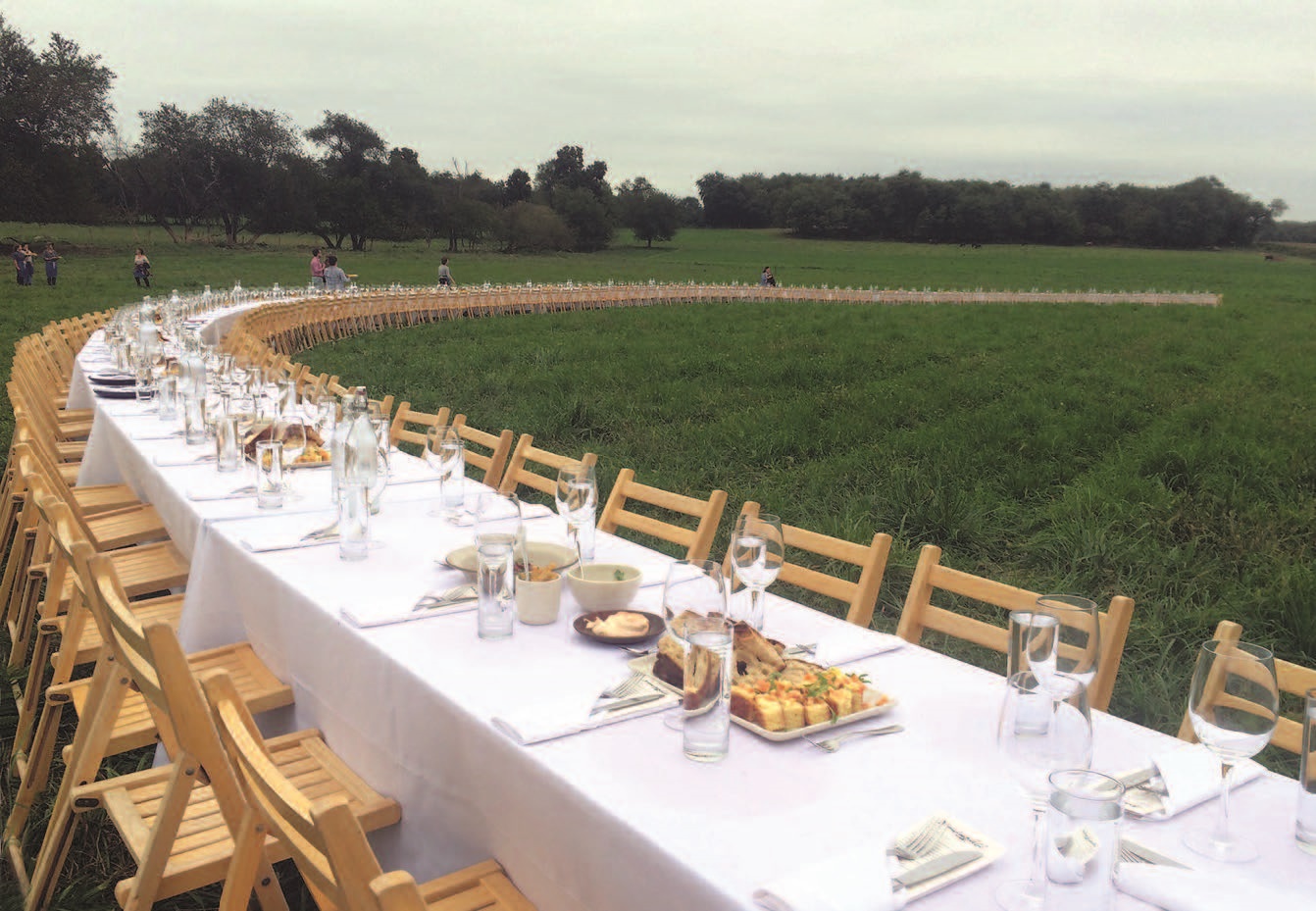


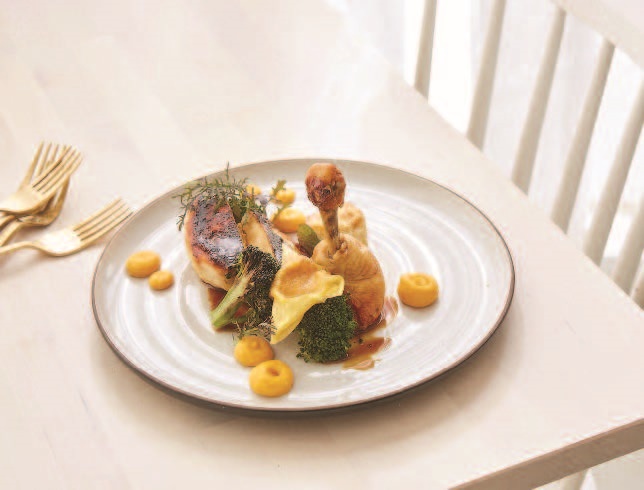
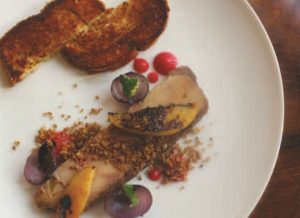
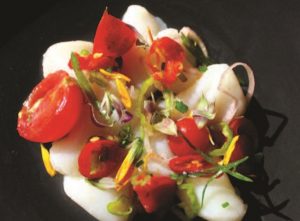
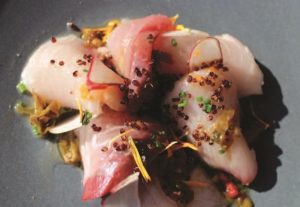



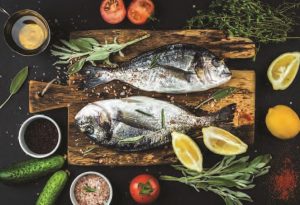



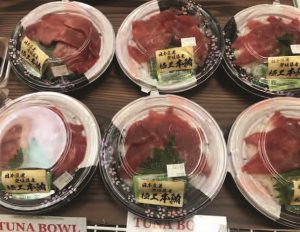



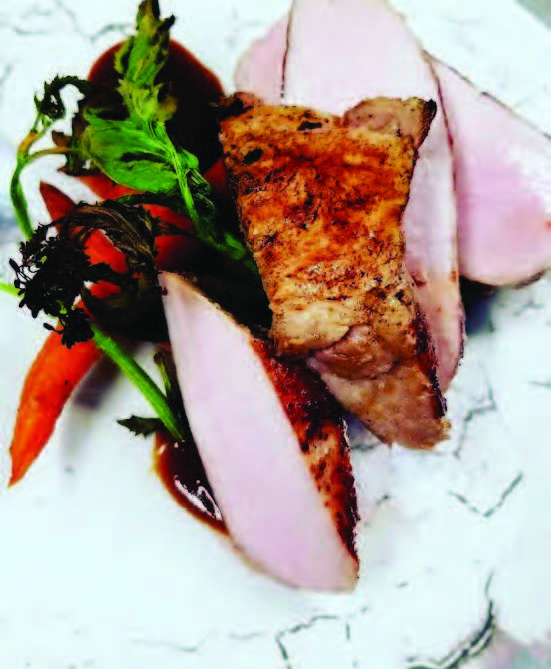 Forrester can do stately and elegant, too. Veal loin, thickly sliced, roasted till rosy and stacked on a potage of corn flecked with kernels, is given a couple scoops of aged gorgonzola, whose sharpness bites into tender, dense meat and tames the sweet corn. It’s a genius combination, these three elements I can’t remember ever eating together. By the time I’m onto the olive oil semifreddo with its plush peanut zabaglione and clever pretzel crumble, I also can’t remember feeling slighted that it took me till age 64 to have veal and corn and gorgonzola as an ensemble.
Forrester can do stately and elegant, too. Veal loin, thickly sliced, roasted till rosy and stacked on a potage of corn flecked with kernels, is given a couple scoops of aged gorgonzola, whose sharpness bites into tender, dense meat and tames the sweet corn. It’s a genius combination, these three elements I can’t remember ever eating together. By the time I’m onto the olive oil semifreddo with its plush peanut zabaglione and clever pretzel crumble, I also can’t remember feeling slighted that it took me till age 64 to have veal and corn and gorgonzola as an ensemble.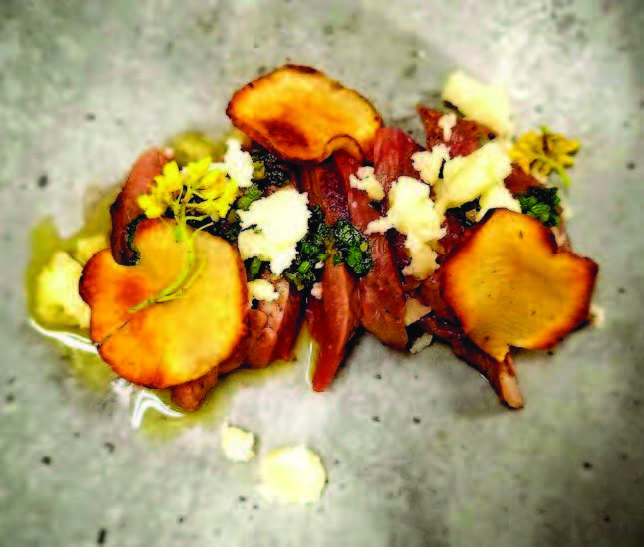 All that, the duck-and-eggplant, beans-and-lamb, pasta- and-pork, veal-and-corn, and semifreddo-zabaglione, is one of Randy Forrester’s new tasting menus; it’s the “Dalla Terre,” the meat menu. There’s also a “Dal Mare,” a seafood-focused menu. You need to do both.
All that, the duck-and-eggplant, beans-and-lamb, pasta- and-pork, veal-and-corn, and semifreddo-zabaglione, is one of Randy Forrester’s new tasting menus; it’s the “Dalla Terre,” the meat menu. There’s also a “Dal Mare,” a seafood-focused menu. You need to do both.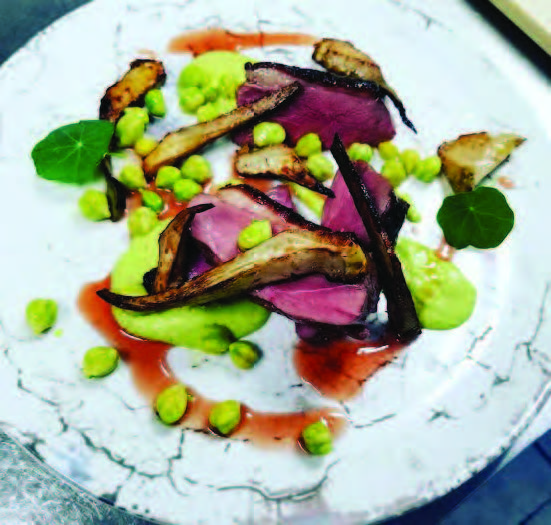
 Forrester’s octopus transcends the cephalopod’s continued trendiness. He chars it, then tosses it with red grapes, fried capers and fennel pollen to make a kind of stew that tastes at turns sprightly and fresh and cuddly and warming. That’s some feat.
Forrester’s octopus transcends the cephalopod’s continued trendiness. He chars it, then tosses it with red grapes, fried capers and fennel pollen to make a kind of stew that tastes at turns sprightly and fresh and cuddly and warming. That’s some feat.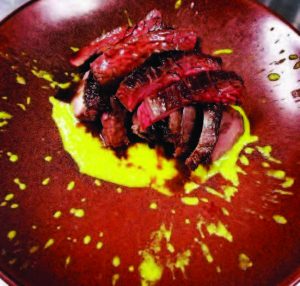 This fish menu is capped by a peach custard that’s as light and frothy as a soufflé and harbors hints of sweet vermouth; it’s finished with finely grated almond. Now that’s how you end a seafood dinner.
This fish menu is capped by a peach custard that’s as light and frothy as a soufflé and harbors hints of sweet vermouth; it’s finished with finely grated almond. Now that’s how you end a seafood dinner. Randy and Ally, who grew up in Central Jersey, first met and became friends while students at the Peddie School in Hightstown. They went off to college (she, Wellesley; he, Boston) and, after reconnecting, began dreaming of creating their own restaurant. In the meantime, Randy amassed serious kitchen credentials, working with Scott Conant at L’Empero and Fabio Trabocchi at Fiamma, and, closer to home, The Ryland Inn and Harvest Moon Inn. They chose Allentown to both stay close to family in the Hopewell Valley and to farmers and artisans they’d grown to admire.
Randy and Ally, who grew up in Central Jersey, first met and became friends while students at the Peddie School in Hightstown. They went off to college (she, Wellesley; he, Boston) and, after reconnecting, began dreaming of creating their own restaurant. In the meantime, Randy amassed serious kitchen credentials, working with Scott Conant at L’Empero and Fabio Trabocchi at Fiamma, and, closer to home, The Ryland Inn and Harvest Moon Inn. They chose Allentown to both stay close to family in the Hopewell Valley and to farmers and artisans they’d grown to admire.
 Those same skills are evident in the soft-shell crab, expertly seared so the shells are crisp-tender, while the meat remains sweet-juicy. It gets a lift from two plate partners that offer a counterpoint to the flavor and texture of the dish: an aioli that resonates with musky, gently bitter saffron to offset the sweetness of the crab, and shavings of cucumber that do the crunch-squirt do-si-do just like the shellfish.
Those same skills are evident in the soft-shell crab, expertly seared so the shells are crisp-tender, while the meat remains sweet-juicy. It gets a lift from two plate partners that offer a counterpoint to the flavor and texture of the dish: an aioli that resonates with musky, gently bitter saffron to offset the sweetness of the crab, and shavings of cucumber that do the crunch-squirt do-si-do just like the shellfish. But what about mussels? A Toute Heure, the original, was known for its mussels pots, an ever-changing, ever-evolving repertoire of them. We indulged with the new “beurre fondue” mussels pot, a rich concoction bolstered by butter (lots), cream (lots) and leeks. This version’s statement-making, breakout ingredient is the addition of potent, but not overwhelming, garlic confit. (Fortunately, the billed “truffle” had little impact.)
But what about mussels? A Toute Heure, the original, was known for its mussels pots, an ever-changing, ever-evolving repertoire of them. We indulged with the new “beurre fondue” mussels pot, a rich concoction bolstered by butter (lots), cream (lots) and leeks. This version’s statement-making, breakout ingredient is the addition of potent, but not overwhelming, garlic confit. (Fortunately, the billed “truffle” had little impact.)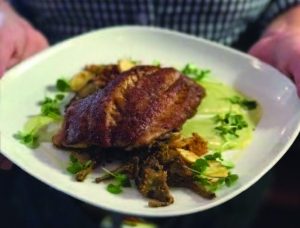 For a decade, Andrea and Jim Carbine served New Jersey in exemplary style, creating a restaurant in A Toute Heure that paved the farm-to-table way for small, personal, bistro-style restaurants determined to educate, enlighten and, ultimately, elevate our expectations of what could be done in a casual, comfortable setting. Like good parents, they gave all they could – and then they let the next generation do their own thing.
For a decade, Andrea and Jim Carbine served New Jersey in exemplary style, creating a restaurant in A Toute Heure that paved the farm-to-table way for small, personal, bistro-style restaurants determined to educate, enlighten and, ultimately, elevate our expectations of what could be done in a casual, comfortable setting. Like good parents, they gave all they could – and then they let the next generation do their own thing. Never have I met a restaurant menu that begs for a French rose more than A Toute Heure’s. It’s possible that the menu served forth by the new regime begs for such a rosé even more forcefully. So much of what we ate, and so much of what we passed up on this first round at the new ATH, seemed made for rosé.
Never have I met a restaurant menu that begs for a French rose more than A Toute Heure’s. It’s possible that the menu served forth by the new regime begs for such a rosé even more forcefully. So much of what we ate, and so much of what we passed up on this first round at the new ATH, seemed made for rosé.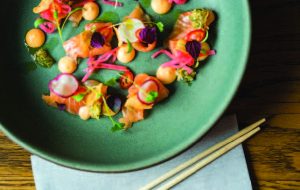
 The headline that stopped Edible America in its tracks came this past September, when The New York Times restaurant critic Pete Wells awarded three stars to Chef Dan Richer’s Razza Pizza Artigianale in Jersey City. The cheeky headline read: “Is New York’s Best Pizza in New Jersey?” OK, we Joiseyans are used to this kind of stuff, this New Yawky taking ownership of New Jersey superiority whenever it suits.
The headline that stopped Edible America in its tracks came this past September, when The New York Times restaurant critic Pete Wells awarded three stars to Chef Dan Richer’s Razza Pizza Artigianale in Jersey City. The cheeky headline read: “Is New York’s Best Pizza in New Jersey?” OK, we Joiseyans are used to this kind of stuff, this New Yawky taking ownership of New Jersey superiority whenever it suits. 
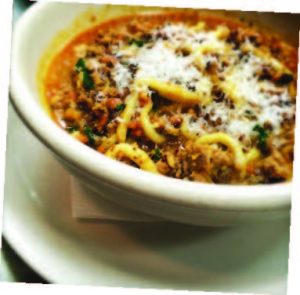
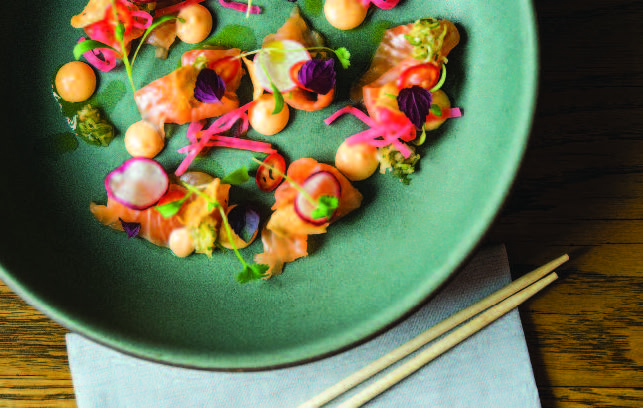



 A local who is conversant in MishMish-ese tells me the hummus is a marvel, but you can skip it in the dip round since it’s easily obtained in hummus bowl form. This is excellent advice, especially since the smoked eggplant spread here is one to order by the gallon. Maybe by the
A local who is conversant in MishMish-ese tells me the hummus is a marvel, but you can skip it in the dip round since it’s easily obtained in hummus bowl form. This is excellent advice, especially since the smoked eggplant spread here is one to order by the gallon. Maybe by the 

 ETHNIC NEW JERSEY
ETHNIC NEW JERSEY Seoulite • Berkeley Heights • Korean
Seoulite • Berkeley Heights • Korean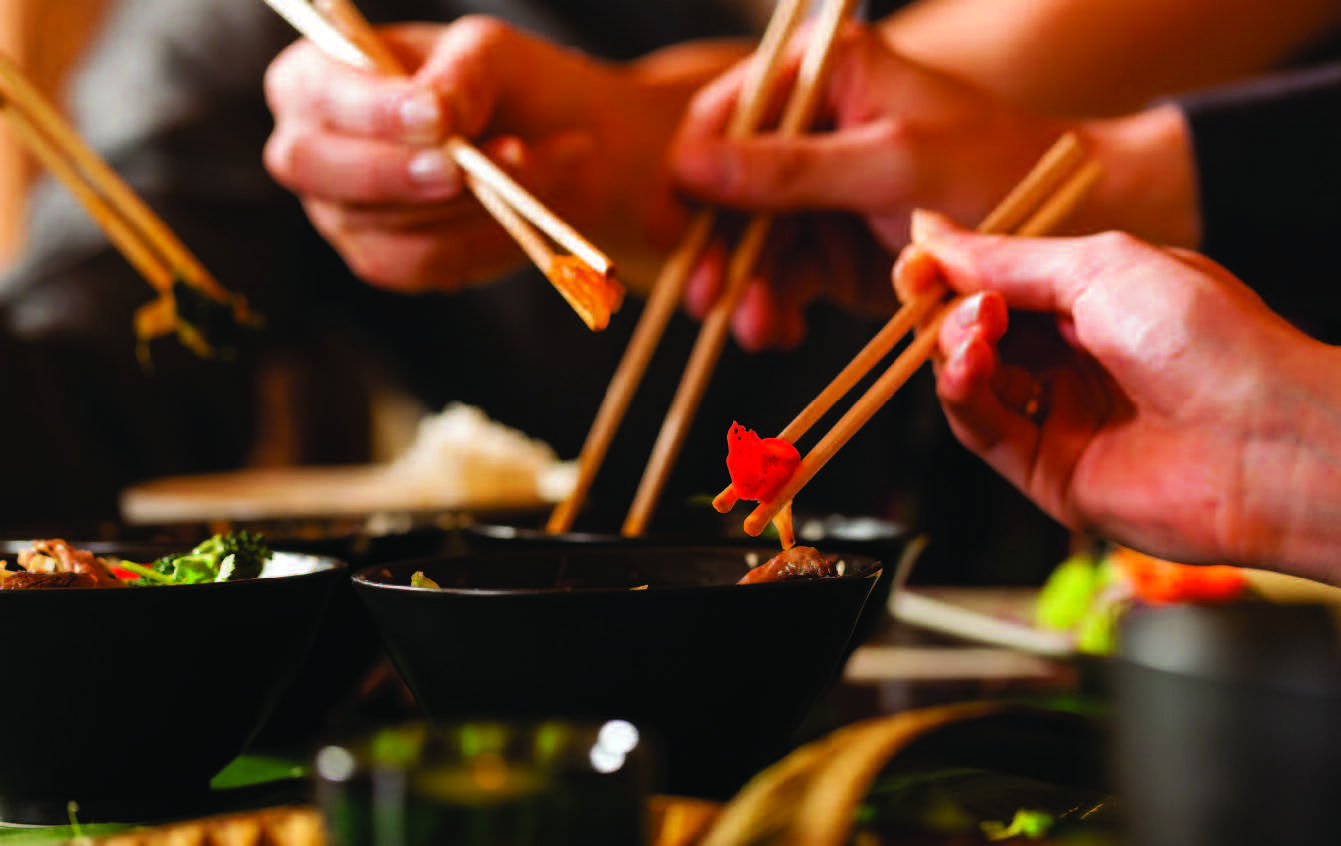








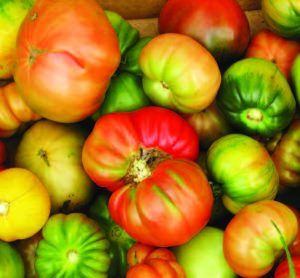
 varieties, were once commercially grown specifically for canning—think Campbell’s Soup in Camden. The seeds can still be purchased for growing in your own garden.
varieties, were once commercially grown specifically for canning—think Campbell’s Soup in Camden. The seeds can still be purchased for growing in your own garden.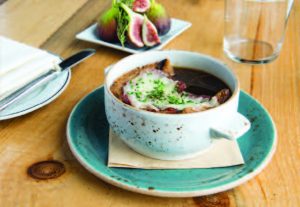
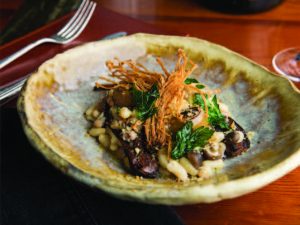
 Talk about bridges: Fat pappardelle, fortified by squid ink and midnight black, is given the all-luxe treatment with a Bolognese of venison, the warmth of chocolate and the infusing heat of Aleppo pepper. It’s another eat/eat more dish. I didn’t feel similarly about the braised and roasted beef duo, with torpedo-shape onions sitting atop the shredded meat and a thick oval of textbook medium-rare beef standing solo on the plate astride the potato-Swiss chard gratin. All good, fine enough, but the heartstrings felt no tug.
Talk about bridges: Fat pappardelle, fortified by squid ink and midnight black, is given the all-luxe treatment with a Bolognese of venison, the warmth of chocolate and the infusing heat of Aleppo pepper. It’s another eat/eat more dish. I didn’t feel similarly about the braised and roasted beef duo, with torpedo-shape onions sitting atop the shredded meat and a thick oval of textbook medium-rare beef standing solo on the plate astride the potato-Swiss chard gratin. All good, fine enough, but the heartstrings felt no tug.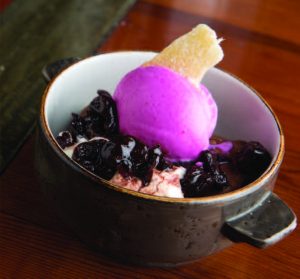 The kitchen needs to take another pass at its maple flan dessert. The flan, thick, pasty and not maple-y, tasted like canned pumpkin pie filling. Its accompanying citrus salad, spiked with Earl Grey, sported unripe segments of grapefruit, while the funnel cake (which looked, oddly, like a fried soft-shell crab) was heavy with batter and oily. And the oval scoop of whipped cream was overwhelmed by cinnamon. In another finale, the chocolate trio, the chocolate-caramel tart was afflicted with un-dissolved sugar and mighty grainy, a flaw neither the hot chocolate nor the icy semifreddo could mitigate.
The kitchen needs to take another pass at its maple flan dessert. The flan, thick, pasty and not maple-y, tasted like canned pumpkin pie filling. Its accompanying citrus salad, spiked with Earl Grey, sported unripe segments of grapefruit, while the funnel cake (which looked, oddly, like a fried soft-shell crab) was heavy with batter and oily. And the oval scoop of whipped cream was overwhelmed by cinnamon. In another finale, the chocolate trio, the chocolate-caramel tart was afflicted with un-dissolved sugar and mighty grainy, a flaw neither the hot chocolate nor the icy semifreddo could mitigate.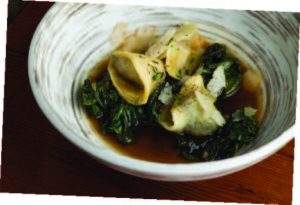 I wondered if Albrecht was getting the proper support in the kitchen with a couple of dishes (quail over-salted, tortellini undercooked). On the whole, the dishes are well-conceived. But, is there a notch that’s not yet been kicked up? I think so.
I wondered if Albrecht was getting the proper support in the kitchen with a couple of dishes (quail over-salted, tortellini undercooked). On the whole, the dishes are well-conceived. But, is there a notch that’s not yet been kicked up? I think so.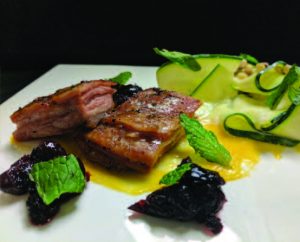
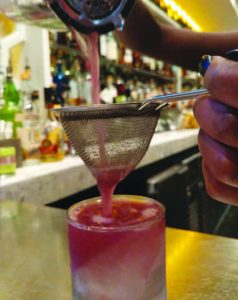 craft cocktail list sporting drinks named to prompt smiles and even giggles. Lavender Holyfield? Laird’s Gin, St. Germaine, fresh lemon juice, and a simple syrup scented with blueberries and lavender. Fallen Angel stars Angel’s Envy and a supporting cast of cold-weather add-ins. You can get a Who Killed Roger Rabbit, with Bulleit Bourbon, carrot juice, ginger beer and a bolt of thyme-infused simple syrup, or down Brunch on the Lower East Side without missing a trend: house-made bacon-infused bourbon, Knob Creek Smoked Maple Bourbon, vermouth and orange bitters. Catch the scene? You are supposed to have fun here.
craft cocktail list sporting drinks named to prompt smiles and even giggles. Lavender Holyfield? Laird’s Gin, St. Germaine, fresh lemon juice, and a simple syrup scented with blueberries and lavender. Fallen Angel stars Angel’s Envy and a supporting cast of cold-weather add-ins. You can get a Who Killed Roger Rabbit, with Bulleit Bourbon, carrot juice, ginger beer and a bolt of thyme-infused simple syrup, or down Brunch on the Lower East Side without missing a trend: house-made bacon-infused bourbon, Knob Creek Smoked Maple Bourbon, vermouth and orange bitters. Catch the scene? You are supposed to have fun here. yogurt that gave Middle Eastern nuance to the lamb, mint, and cranberries that offered throwback accenting tastes, and shavings of zucchini that provided a kind of palate cleanse between the variously spiced bites. Good stuff.
yogurt that gave Middle Eastern nuance to the lamb, mint, and cranberries that offered throwback accenting tastes, and shavings of zucchini that provided a kind of palate cleanse between the variously spiced bites. Good stuff.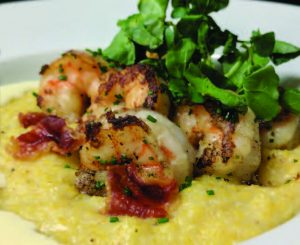 It should, if the Bacon Bolognese continues on the menu. It’s a kind of make-it-yourself carbonara, with a perfectly poached egg sitting atop peppery cavatelli tossed with applewood smoked bacon, tomato, and mozzarella. Prick the egg, let it run into the rest, toss (and toss some more), and you have a pasta dish for the ages. We liked it far better than the bland shrimp and grits, which had little presence of either the billed smoked cheddar or the lemon-garlic butter. Roasted Scottish salmon is the better choice in seafood, with a hot-sour broth fueled by tamarind and a stir-fry of tannic spinach that provided a counterpoint to the rich fish. A nightly special of steak tips plied with lemongrass didn’t make the point of why the beef needed that particular accent; it’s a dish that needs work. But Texas barbecue-style brisket? Sure thing. Belly up to that plate, complete with a Thanksgiving-ready creamy green bean-corn casserole and a splay of long-simmered onions.
It should, if the Bacon Bolognese continues on the menu. It’s a kind of make-it-yourself carbonara, with a perfectly poached egg sitting atop peppery cavatelli tossed with applewood smoked bacon, tomato, and mozzarella. Prick the egg, let it run into the rest, toss (and toss some more), and you have a pasta dish for the ages. We liked it far better than the bland shrimp and grits, which had little presence of either the billed smoked cheddar or the lemon-garlic butter. Roasted Scottish salmon is the better choice in seafood, with a hot-sour broth fueled by tamarind and a stir-fry of tannic spinach that provided a counterpoint to the rich fish. A nightly special of steak tips plied with lemongrass didn’t make the point of why the beef needed that particular accent; it’s a dish that needs work. But Texas barbecue-style brisket? Sure thing. Belly up to that plate, complete with a Thanksgiving-ready creamy green bean-corn casserole and a splay of long-simmered onions. INC has a multi-page whiskey menu that is presented at the start of a meal. The time it could take to digest this whiskey bill of fare might prevent you from actually dining, but it is a major attraction for whiskey lovers. Take the Manager’s Reserve List: There’s Corsets, Whips and Whiskey, Elijah Craig Barrel Proof, and Noah’s Mill. You also can do whiskey flights: Where There’s Smoke There’s Islay Scotch, Rye Not? and In ‘Bond’ We Trust. It’s all in good fun.
INC has a multi-page whiskey menu that is presented at the start of a meal. The time it could take to digest this whiskey bill of fare might prevent you from actually dining, but it is a major attraction for whiskey lovers. Take the Manager’s Reserve List: There’s Corsets, Whips and Whiskey, Elijah Craig Barrel Proof, and Noah’s Mill. You also can do whiskey flights: Where There’s Smoke There’s Islay Scotch, Rye Not? and In ‘Bond’ We Trust. It’s all in good fun.
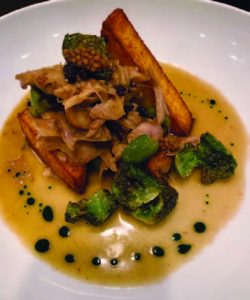
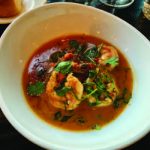
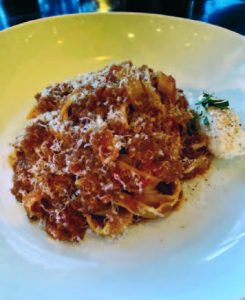
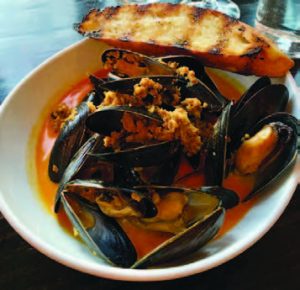

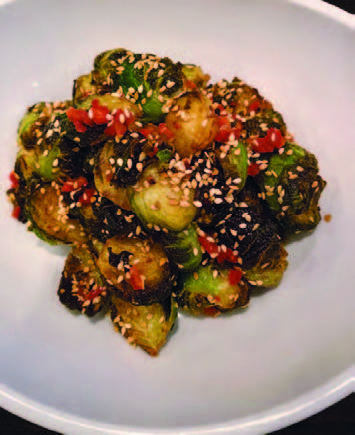



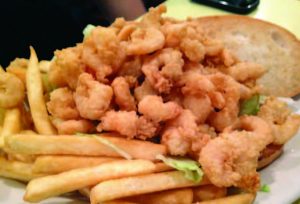

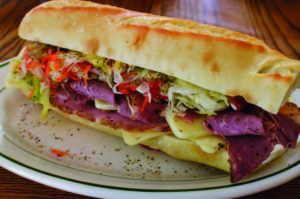

 They work where the girls are, the egg-layers, the turkeys, the broilers—those Cornish crosses that are the pasture-raised chickens sold under the Gladstone Valley Pasture Poultry label. A sibling enterprise to River Bend Farm, headquartered in Far Hills, Gladstone Valley chickens are the American equivalent to the Bresse chicken in France, the anointed “queen of poultry, poultry of kings.”
They work where the girls are, the egg-layers, the turkeys, the broilers—those Cornish crosses that are the pasture-raised chickens sold under the Gladstone Valley Pasture Poultry label. A sibling enterprise to River Bend Farm, headquartered in Far Hills, Gladstone Valley chickens are the American equivalent to the Bresse chicken in France, the anointed “queen of poultry, poultry of kings.”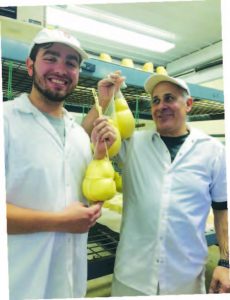 Professor in a doctoral program is more like it. Sal Pisani grew up under the tutelage of his father Rocco, who was born and reared in Calabria, Italy, but moved to the U.S. at 21, settling in Morris County. There, on threeacres, the Pisani family created their own Little Italy. “My father brought with him the traditions he picked up from his mother,” Sal says. “Dad would make cheese, cure meats. Every September, we’d make tomato sauce. It was all about food, when I was growing up, homesteading, not selling what we made.” There was a vegetable garden, animals – “chickens, goats, a horse, sheep, a peacock and an alpaca, but never more than 15 animals”—and the constant rhythm of time at the table with family and friends.
Professor in a doctoral program is more like it. Sal Pisani grew up under the tutelage of his father Rocco, who was born and reared in Calabria, Italy, but moved to the U.S. at 21, settling in Morris County. There, on threeacres, the Pisani family created their own Little Italy. “My father brought with him the traditions he picked up from his mother,” Sal says. “Dad would make cheese, cure meats. Every September, we’d make tomato sauce. It was all about food, when I was growing up, homesteading, not selling what we made.” There was a vegetable garden, animals – “chickens, goats, a horse, sheep, a peacock and an alpaca, but never more than 15 animals”—and the constant rhythm of time at the table with family and friends. “Our customers go insane over our carrots—they’re the sweetest carrots!” adds Stephanie. They grow in theground, in high tunnels, or hoop houses—plastic-covered structures that allow a plant’s roots to take in the nutrients of good soil, all the while being protected from storms and other excesses of the elements. Not that the couple wish to defy seasonality.
“Our customers go insane over our carrots—they’re the sweetest carrots!” adds Stephanie. They grow in theground, in high tunnels, or hoop houses—plastic-covered structures that allow a plant’s roots to take in the nutrients of good soil, all the while being protected from storms and other excesses of the elements. Not that the couple wish to defy seasonality.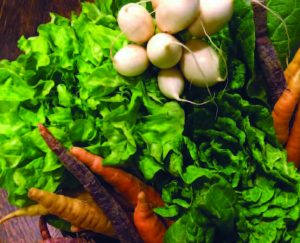 To work it all by the numbers: The Niederer family farm is about 80 acres, 40 of which are tillable and 25 of which—Chickadee Creek—Jess leases from her father. She employs nine people full-time, year-round, and is “trying to get every single one of them up to the $15-an-hour benchmark” well before state requirements kick in. Now in her 10th year running Chickadee Creek, she is 35 years old, has approximately 500 members in her CSA (Community Supported Agriculture) program. When we walk into one of her high tunnels, where gorgeous arugula is grown in the ground all winter, she’s quick to note a $14,000 tractor can work the soil of this 196-foot-by-30-foot structure. The number most on Jess Niederer’s mind, however, is $1 million—that’s the amount Jess needs to buy her farmland from her father. “It would be about $4 million if it wasn’t in the state preserved farmland program,” she says. That would not come with a house—just the land that Jess works to feed the thousands of people in New Jersey who love eating Chickadee produce.
To work it all by the numbers: The Niederer family farm is about 80 acres, 40 of which are tillable and 25 of which—Chickadee Creek—Jess leases from her father. She employs nine people full-time, year-round, and is “trying to get every single one of them up to the $15-an-hour benchmark” well before state requirements kick in. Now in her 10th year running Chickadee Creek, she is 35 years old, has approximately 500 members in her CSA (Community Supported Agriculture) program. When we walk into one of her high tunnels, where gorgeous arugula is grown in the ground all winter, she’s quick to note a $14,000 tractor can work the soil of this 196-foot-by-30-foot structure. The number most on Jess Niederer’s mind, however, is $1 million—that’s the amount Jess needs to buy her farmland from her father. “It would be about $4 million if it wasn’t in the state preserved farmland program,” she says. That would not come with a house—just the land that Jess works to feed the thousands of people in New Jersey who love eating Chickadee produce. Mishti Chocolates
Mishti Chocolates The Scotch Plains resident started making chocolates professionally when she and husband Puneet Girdhar realized their then-baby daughter Mishti had a variety of allergies, including dairy. “We have a healthy household,” says Arpita, a skilled home cook who had been making chocolates since she was a child. “So I started making vegan chocolates.” And it worked. Little Mishti, now 4½, could enjoy chocolates like her mom and dad. Arpita, creative by nature with a career in textiles, kept experimenting and perfecting the chocolate line she named Mishti. She uses 100 percent chocolate; her milk chocolate is made with almond milk and her sourcing meticulous. Her elegant packaging reflects the fundamental simplicity of her recipes and products.
The Scotch Plains resident started making chocolates professionally when she and husband Puneet Girdhar realized their then-baby daughter Mishti had a variety of allergies, including dairy. “We have a healthy household,” says Arpita, a skilled home cook who had been making chocolates since she was a child. “So I started making vegan chocolates.” And it worked. Little Mishti, now 4½, could enjoy chocolates like her mom and dad. Arpita, creative by nature with a career in textiles, kept experimenting and perfecting the chocolate line she named Mishti. She uses 100 percent chocolate; her milk chocolate is made with almond milk and her sourcing meticulous. Her elegant packaging reflects the fundamental simplicity of her recipes and products.